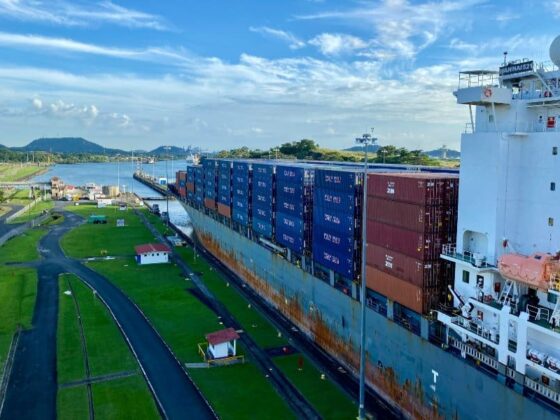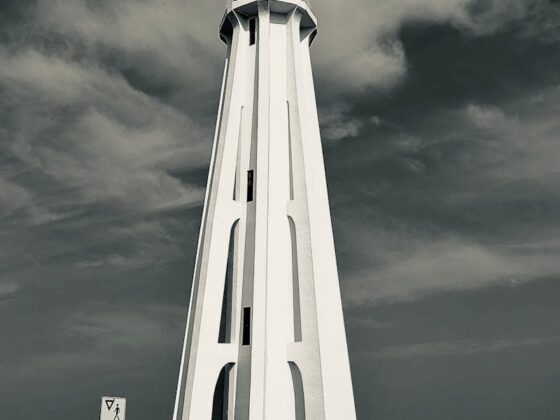Bridges are more than just structures that span waterways, valleys, or roads; they are symbols of human ingenuity, connecting distant places and facilitating the seamless movement of people and goods. Among these engineering marvels, the quest to identify the longest bridge in the United States sparks intrigue and admiration. This article embarks on an exploratory journey to unveil the longest bridge in the US, delving into its design, history, and the pivotal role in the nation’s infrastructure. As we bridge the gap between mere curiosity and in-depth understanding, we will explore not just the physical dimensions that make it the longest but also the impact it has on transportation, the economy, and regional connectivity. Join us as we traverse the length of this engineering feat, uncovering the stories and statistics that lie beneath its expansive span.
What is the longest bridge in the us?
The longest bridge in the United States is the Lake Pontchartrain Causeway in Louisiana. Spanning an impressive length of approximately 24 miles (38.6 kilometers), the causeway holds the title of the world’s longest continuous bridge over water. Comprised of two parallel bridges, it connects the city of Metairie, a suburb of New Orleans, with Mandeville on the northern shore of Lake Pontchartrain. This marvel of engineering serves as a vital transportation route and stands as a testament to human ingenuity in overcoming geographical challenges. Completed in 1956 (southbound) and 1969 (northbound), the causeway has significantly improved connectivity and economic interactions between the regions it links, showcasing the impact of large-scale infrastructure projects on daily life and regional development.
Historical Context and Construction
The Lake Pontchartrain Causeway, the longest bridge in the United States, boasts a fascinating history marked by visionary planning and innovative engineering.
Initiation and Planning: The concept of the causeway emerged in the early 20th century, driven by the need to improve transportation links between New Orleans and the communities along the north shore of Lake Pontchartrain. Before the bridge, the only means of crossing the lake were by ferry or a lengthy detour around the lake’s perimeter, significantly hindering economic and social interaction between the regions.
Design and Engineering Challenges: The bridge’s design overcame significant engineering challenges, including constructing a stable foundation in the soft lake bed and designing a structure that could withstand the lake’s environmental conditions. The solution was a series of thousands of concrete pilings driven deep into the lakebed, providing the necessary support for the bridge’s spans.
Construction Phases: Construction of the Causeway commenced in 1955. The first span, the southbound lane, was completed and opened to traffic in 1956, dramatically reducing travel time between the north shore and New Orleans. Due to the immediate success and the high demand for the route, a decision was made to construct a parallel span to accommodate northbound traffic. This second span was completed in 1969, doubling the capacity of the causeway and further cementing its status as a critical piece of infrastructure.
Economic and Social Impact: The completion of the Lake Pontchartrain Causeway profoundly impacted the region’s development. It facilitated economic growth by enabling easier access to goods and services between New Orleans and the North Shore communities. Additionally, it spurred residential and commercial development along the north shore, transforming previously isolated areas into thriving suburbs.
Recognition and Records: Upon its completion, the Causeway was recognized as the longest bridge over water in the world by the Guinness Book of World Records. This accolade brought national and international attention to the engineering prowess and ambition of the United States in undertaking such a monumental infrastructure project.
Design and Engineering
The design and engineering of the Lake Pontchartrain Causeway are testaments to human ingenuity and resilience in the face of geographical and environmental challenges. This marvel of modern engineering was meticulously planned and constructed to stand the test of time and nature, incorporating several key features and innovations:
- Prestressed Concrete Pilings: The foundation of the causeway is supported by over 9,000 prestressed concrete pilings. These pilings, each approximately 55 feet long, were driven deep into the soft bed of Lake Pontchartrain to ensure a stable foundation capable of supporting the massive structure. Prestressed concrete, which is pre-compressed to counteract the tensile stresses exerted during use, made the pilings more resistant to the forces of nature.
- Parallel Bridge Spans: The Causeway consists of two parallel bridge spans, running side by side for nearly 24 miles. This dual-span design was crucial for managing the high traffic volume between the north shore and New Orleans, effectively doubling the causeway’s capacity.
- Navigation Bascules: Given the necessity to not obstruct marine traffic, the causeway incorporates bascule bridges at each end. These movable sections can be raised to allow the passage of ships and large boats, ensuring that the bridge serves both road and maritime users without compromise.
- Safety Features: Safety on such an extensive bridge is paramount. The Causeway is equipped with safety shoulders, crossover points, and emergency call boxes at regular intervals. Additionally, the Causeway Police patrol the bridge 24/7, ready to assist motorists in distress and ensure a safe passage for all.
- Environmental Considerations: The design also considered the environmental impact on Lake Pontchartrain. The construction methods and materials were chosen to minimize disruption to the lake’s ecosystem, demonstrating an early awareness and responsibility toward environmental conservation.
- Adaptation to Environmental Conditions: The Causeway was engineered to withstand the harsh weather conditions of the Gulf Coast, including hurricanes. Its robust design ensures stability against high winds, waves, and storm surges, proving its resilience time and again against nature’s fury.
Comparison with Other Long Bridges in the US
Comparing the Lake Pontchartrain Causeway with other long bridges in the United States highlights the diversity and ingenuity in bridge design and construction across the country. While the Causeway holds the title for the longest bridge over water, other bridges stand out for their unique features and engineering marvels.
Chesapeake Bay Bridge-Tunnel (CBBT):
Spanning 17.6 miles, Virginia’s CBBT combines bridge and tunnel elements to cross the Chesapeake Bay. Unlike the continuous span of the Causeway, the CBBT uses a series of bridges and tunnels to allow ships to pass and manage the deep waters of the bay. This engineering feat showcases a different approach to addressing navigational and environmental challenges.
Seven Mile Bridge:
Part of the Overseas Highway in the Florida Keys, the Seven Mile Bridge runs over approximately 6.79 miles. Although significantly shorter than the Causeway, it is notable for its scenic beauty and the technical challenges overcome during its construction, such as resistance to corrosive saltwater and hurricane-force winds. It represents a critical link in the chain of islands, highlighting the role of bridges in enhancing connectivity in geographically fragmented regions.
Mackinac Bridge:
Connecting the Upper and Lower Peninsulas of Michigan, the Mackinac Bridge spans 5 miles over the Straits of Mackinac. While not competing in length with the Causeway, it stands out for its impressive central span and the engineering solutions applied to cope with the challenging weather conditions of the Great Lakes, including ice loads and high winds.
Conclusion
The Lake Pontchartrain Causeway stands as a monumental achievement in the realm of civil engineering, not only for its record-breaking length but also for the ingenuity and resilience embedded in its design and construction. By comparing it with other significant bridges across the United States, such as the Chesapeake Bay Bridge-Tunnel, the Seven Mile Bridge, and the Mackinac Bridge, we gain a deeper appreciation for the diverse engineering challenges and solutions that characterize America’s infrastructure. Each bridge, with its unique features and specific purpose, contributes to the fabric of national connectivity, showcasing the blend of creativity, technology, and determination that defines the country’s approach to overcoming geographical barriers. The Lake Pontchartrain Causeway, in particular, symbolizes the triumph of human endeavor over the challenges posed by nature, serving as a vital link for communities and a testament to the enduring spirit of innovation.










